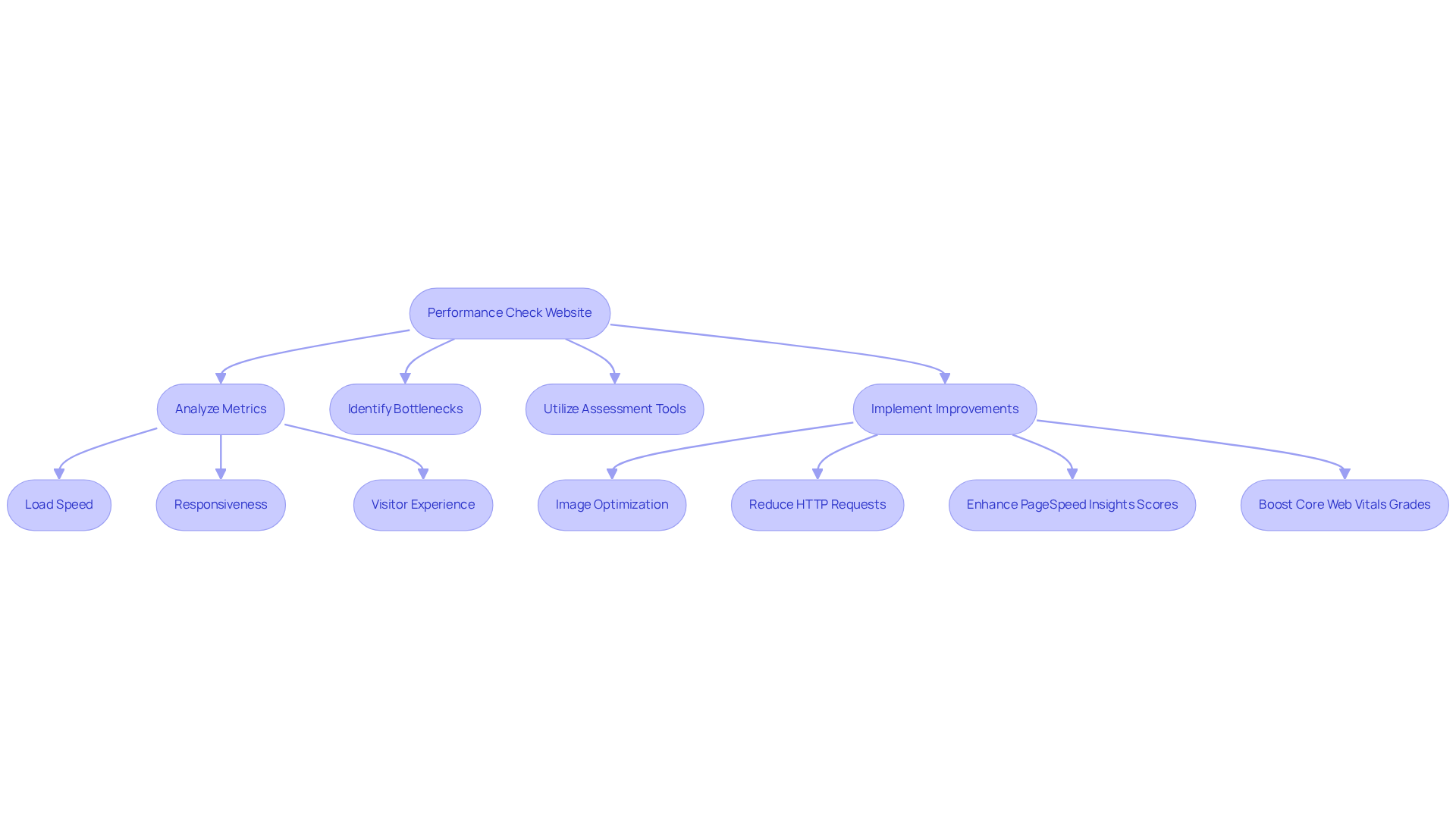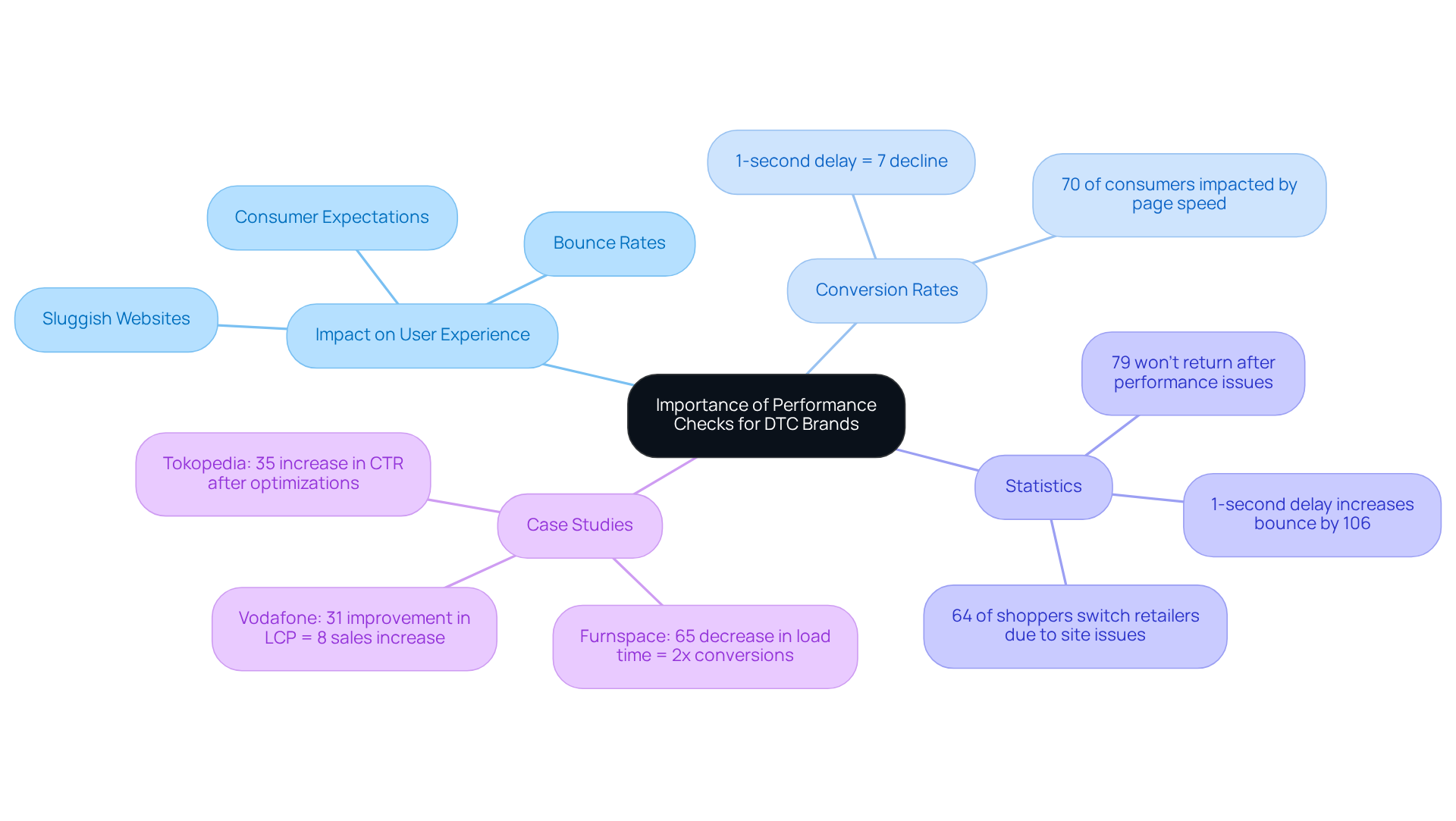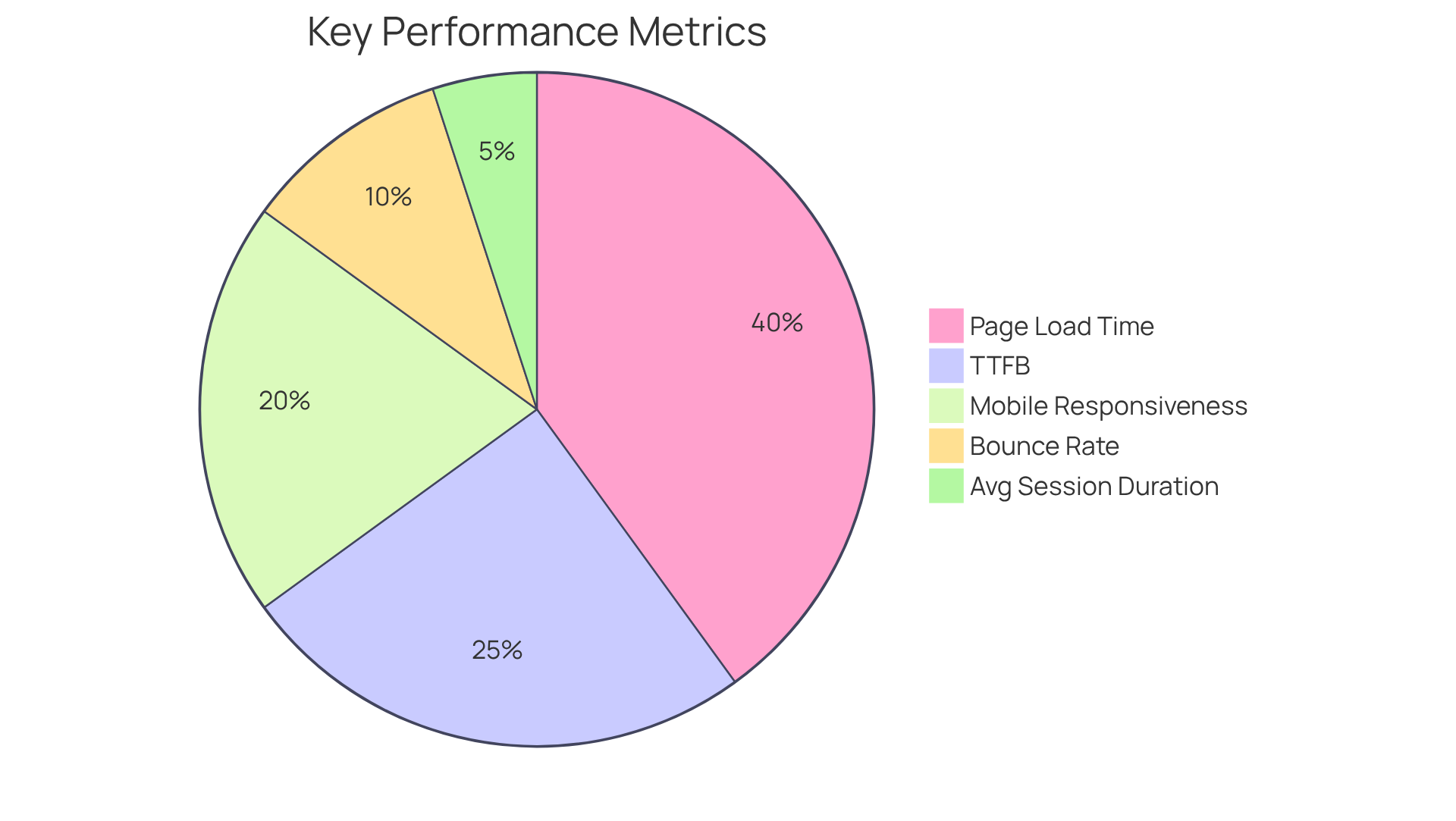
Overview
The performance check website is indispensable for direct-to-consumer (DTC) brands, as it meticulously evaluates critical metrics such as load speed and responsiveness. These factors directly influence user experience and conversion rates. Notably, even minor enhancements in loading times can lead to substantial improvements in customer engagement and sales. Statistics reveal that a one-second delay can reduce conversions by 7%. This underscores the imperative for regular performance assessments, which are essential to optimize an online presence and drive business success.
Introduction
A website's performance is crucial for the success of a direct-to-consumer (DTC) brand, influencing user experience and conversion rates alike. With an astonishing 47% of customers expecting pages to load in under two seconds, the urgency for brands to engage and retain online shoppers has reached unprecedented levels.
This article examines the essential role of performance check websites, revealing how they empower DTC brands to pinpoint and address inefficiencies that obstruct sales and diminish customer satisfaction.
What are the consequences when a brand neglects these critical checks, and how can the right tools revolutionize their online presence?
Define Performance Check Website
A provides a comprehensive analysis of a site's operational effectiveness, focusing on , responsiveness, and overall visitor experience. This assessment employs specialized tools to scrutinize website performance under varying conditions, pinpointing bottlenecks that may impede visitor engagement and . For , conducting regular performance evaluations is and optimize sales.
Research reveals that 47% of customers anticipate a webpage to load in 2 seconds or less, while ideally, a website should appear in under three seconds, as 40% of users abandon sites that exceed this threshold. Furthermore, each 100ms improvement in , as demonstrated by Mobify's findings. For example, Walmart discovered that a one-second enhancement in page load time resulted in a 2% rise in conversions, illustrating the direct correlation between speed and sales.
various assessment tools provided by a performance check website to ensure their websites meet these standards. Tools such as , including image optimization and reducing HTTP requests. Notably, WP Rocket can boost PageSpeed Insights scores and Core Web Vitals grades. By prioritizing , DTC companies can , lower bounce rates, and ultimately drive higher conversion rates.

Importance of Performance Checks for DTC Brands
Performance checks are indispensable for , exerting a profound influence on user experience and conversion rates. In today's digital landscape, where consumers demand swift and seamless interactions, a sluggish or underperforming website can lead to .
Research underscores this urgency:
- A mere 1-second delay in page load time can precipitate a 7% decline in conversion rates.
- 64% of shoppers encountering site functionality issues would opt for another online retailer.
- 70% of consumers assert that their willingness to purchase from an online shop.
Regular assessments using a empower DTC companies to pinpoint issues such as , facilitating timely modifications that enhance user satisfaction and drive profitability. These evaluations also enable companies to maintain competitiveness by ensuring they using a [performance check website](http://parahgroup.com/blogs/4-steps-to-achieve-cheap-pricing-on-amazon-deals).
Companies that have prioritized site speed have reported remarkable improvements; for instance, a $30M apparel company collaborating with experienced a 35% increase in conversion rates following strategic optimizations. Similarly, Grab Green, a $15M cleaning product company, achieved an impressive 73% rise in average order value through targeted enhancements.
By committing to and aligning improvement efforts with campaign schedules, DTC companies can significantly enhance customer experience and substantially boost their sales potential.

Key Metrics and Factors in Performance Checks
in performance evaluations for are crucial for understanding and as assessed on a . Page refresh time, time to first byte (TTFB), and overall site responsiveness stand out as essential indicators. Notably, reflects how quickly a webpage fully loads, with an optimal target of under three seconds; this is vital as 40% of consumers abandon sites that exceed this timeframe. Furthermore, TTFB measures the server's response time to a request, with a desirable TTFB score of less than 800 milliseconds being critical for user satisfaction.
Given that mobile devices now account for over half of web traffic, has become increasingly important. In 2023, mobile pages loaded 70.9% slower than their desktop counterparts, highlighting an urgent need for optimization. Additionally, user engagement metrics such as and average session duration offer valuable insights into user behavior. For instance, a B2C eCommerce site that loads within one second can convert 2.5 times more visitors than one that takes five seconds to load.
By closely monitoring these key metrics, DTC companies can identify areas for improvement through a performance check website. This proactive approach not only but also drives increased revenue, making it imperative for brands to prioritize these performance indicators.

Impact of Performance Checks on Conversion Rates and Profitability
Performance checks are pivotal in and profitability for DTC companies. Research reveals that even a one-second delay in can result in a staggering 7% decrease in conversions. For companies operating in competitive markets, particularly during peak shopping periods, this can lead to significant revenue losses.
Organizations that prioritize and improved engagement, which translates into increased revenue. By conducting through a or Lighthouse and implementing essential optimizations, brands can enhance user experience, reduce bounce rates, and ultimately elevate conversion rates.
Notably, the majority of visitors will abandon a site if it takes more than three seconds to load, underscoring the in retaining customers. This proactive strategy not only boosts immediate sales but also fosters long-term customer loyalty, essential for sustained profitability.
Furthermore, , who typically expect load times of 6-10 seconds, is crucial in today’s mobile-first environment. Brands that have successfully leveraged website optimization to enhance profitability exemplify the tangible benefits of prioritizing a performance check website within their digital strategies.

Conclusion
A performance check website stands as an indispensable asset for direct-to-consumer (DTC) brands, empowering them to assess and elevate their online presence with precision. By concentrating on pivotal metrics such as load speed and user experience, these evaluations enable brands to meet consumer expectations and catalyze sales. The incorporation of performance checks into a brand's strategy not only facilitates immediate enhancements but also establishes a foundation for enduring success in a competitive marketplace.
This article underscores the necessity of regular performance evaluations, illuminating the direct link between website speed and conversion rates. Key insights reveal that even slight delays can precipitate substantial declines in user engagement and sales. DTC brands that utilize tools like Google PageSpeed Insights can pinpoint areas for advancement, ultimately amplifying customer satisfaction and increasing profitability. Case studies illustrate that strategic optimizations can yield remarkable surges in conversion rates and average order values, reinforcing the imperative of continuous performance assessments.
In a digital landscape where consumer expectations soar higher than ever, prioritizing website performance transcends mere advantage—it becomes essential. DTC brands that dedicate themselves to consistent performance checks will not only enhance their immediate sales results but also foster enduring customer loyalty. By adopting this proactive strategy, brands can position themselves for sustainable growth, ensuring they remain competitive and relevant in an ever-evolving market.
Frequently Asked Questions
What is a performance check website?
A performance check website provides a comprehensive analysis of a site's operational effectiveness, focusing on metrics like load speed, responsiveness, and overall visitor experience.
Why is it important for direct-to-consumer (DTC) brands to conduct performance evaluations?
Regular performance evaluations are essential for DTC brands to meet consumer expectations, optimize sales, and enhance visitor engagement and conversion rates.
What do research findings indicate about webpage loading times?
Research shows that 47% of customers expect a webpage to load in 2 seconds or less, and ideally, a website should load in under three seconds. 40% of users abandon sites that exceed this loading time.
How does loading time affect conversion rates?
Each 100ms improvement in loading time can lead to a 1.11% increase in conversions. For instance, Walmart found that a one-second improvement in page load time resulted in a 2% rise in conversions.
What tools can DTC companies use to assess their website performance?
DTC companies can use tools like Google PageSpeed Insights and WP Rocket to identify areas for improvement, such as image optimization and reducing HTTP requests.
How can WP Rocket specifically benefit website performance?
WP Rocket can boost PageSpeed Insights scores and improve Core Web Vitals grades, helping to enhance overall website performance.
What are the benefits of prioritizing website performance evaluations?
Prioritizing website performance evaluations can lead to enhanced customer satisfaction, lower bounce rates, and ultimately drive higher conversion rates for DTC companies.
FAQs











